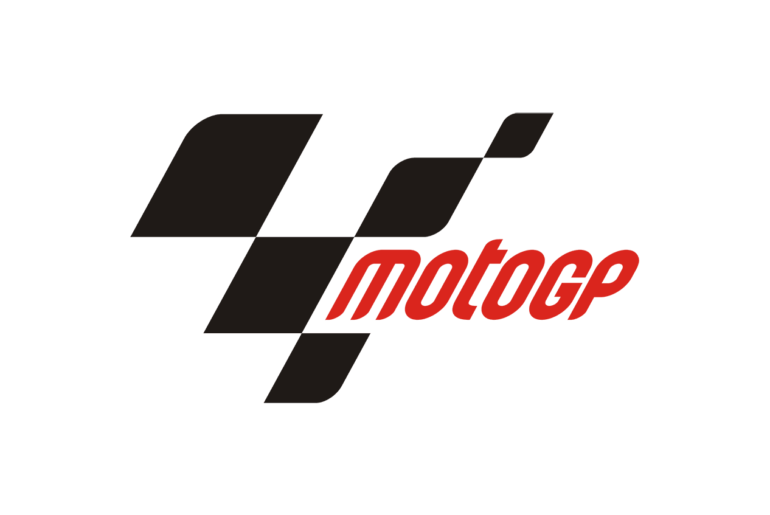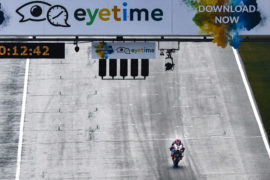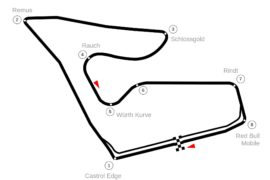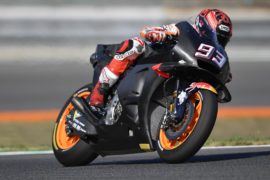The announcement of the MotoGP test dates in the middle of last week have given a hint of how the 2019 MotoGP calendar is to take shape.
The official announcement is not expected for another month or so – Dorna are still waiting for the F1 calendar to be published, to try to avoid direct clashes with the premier car racing series.
The F1 calendar will not have the same influence as it had in previous years, however: since new owners Liberty took over the series, they have moved the start time of F1 races to 3:10pm Central European Time, some 10 minutes after MotoGP has finished the podium ceremony.
The MotoGP test schedule sees three official tests taking place over the winter, though one of them is before the official winter break. The MotoGP field will be at Jerez on the 28th and 29th November for the first official test.
This basically converts the previous private test, which most teams attended, into an official one, forcing all of the teams to take the track together, and to an extent, improving the coverage of the test.
Testing continues after the winter break, the teams picking up at Sepang on the 6th-8th of February. Two weeks later, the MotoGP teams assemble once again for the final test before the season begins, at Qatar from the 23rd to the 25th February.
Moto2 and Moto3 test at the same Losail Circuit a week later, and the first race of the 2019 MotoGP season will almost certainly take place on 10th March.
The Qatar race will retain roughly the same schedule as it did this year, with the MotoGP race at 7pm local time, roughly an hour after sunset.
But the Moto3 and Moto2 races will probably be moved a little earlier: the last few laps of the Moto2 race saw the riders riding directly into the setting sun, causing visibility problems. The Qatar schedule is still subject to review, but should be decided quite soon.
20 Races, Or 19?
The 2019 calendar will feature 20 races, though it will be Mexico on the schedule as the 20th race, rather than Finland. The Kymiring circuit has still not completed construction, and they need another year to get ready for MotoGP.
The Mexico race, scheduled to be held at the Autodromo Hermanos Rodriguez near Mexico City, will take place two weeks after the Argentina round of MotoGP at Termas De Rio Hondo, and the week before the Austin race.
There might be 20 races on the calendar, but whether 20 races will actually be held is another question altogether. Watching footage from the F1 race held at the track, the circuit seems impossibly dangerous.
Chicho Lorenzo, father of Jorge, said it was “suicide to race MotoGP there” in a recent tweet. Valentino Rossi’s verdict was equally devastating.
“I’m quite desperate because first of all it becomes 20 races. It means we don’t have a life,” Rossi complained. “Apart from this first problem, it’s a very bad track. I don’t like. It’s dangerous also.”
“They have to modify some part of the track but it’s very difficult to modify like this, it’s not easy. For me a race next year is not a good idea, for sure.”
Playing the Long Game
This move seems more like a gambit by Dorna to show goodwill towards the idea of a race in Mexico, despite the fact that the Hermanos Rodriguez circuit is a very long way from meeting MotoGP and FIM safety standards.
Dorna will probably sign a contract and make an announcement, while emphasizing that the contract is subject to the circuit meeting safety requirements.
The circuit is unlikely to manage that in the eight months between now and next April, and the actual race is likely to be canceled fairly early in the process.
This may look like a farcical development in the short term, but it is good for the sport in the long term. Dorna show willing to move into new and important markets, which is good for the manufacturers and for the sport in Mexico and other parts of Central America.
It gets Mexican fans fired up, which is likely to push them to persuade the circuit and local authorities to make the circuit upgrades possible. It may even persuade a few more Mexican fans to cross the border to Austin, and see a race at the Circuit of the Americas.
We have seen similar developments in other countries as well. MotoGP is going to have a race in Indonesia at some point, but right now, there isn’t a track that can host the series.
Yet there have been all sorts of announcements about MotoGP going to Indonesia, despite the chances of it happening in the next two or three years being relatively slim.
But it gets Indonesian fans excited, the fans put pressure on local, regional, and national governments, and eager Indonesians who can’t wait head to Sepang and, in October, to Thailand to watch a race.
A race in Mexico, even a canceled race, will help to generate plenty of hype around the series. That will increase the chances of a race happening somewhere in Central America in the medium term, even if the scheduled round doesn’t happen in the short term
Plus Ça Change
The basic schedule for the calendar is likely to remain very similar to the schedule in 2018. The sequence and timing of the races will remain broadly the same. One change that will be pushed through is to move the German GP a week earlier, to be back to back with the Dutch round at Assen.
This would allow the riders to have a three-week break between Germany and Brno, instead of just the two weeks off between the races. That was one consistent complaint from the riders both at the Sachsenring, and at Brno this year.
It is still unknown where the German round of MotoGP will be held in 2019, but the chances that the series returns to the Sachsenring is high.
The federal government of Saxony is working with the circuit to secure the necessary funds to organize the race, as it is a big money spinner for the region, generating a lot of economic activity in the surrounding area.
But they have to reach an accommodation with the ADAC, the German equivalent of the AA (or AAA), who hold the rights to organize the race.
Finland, which has a contract to host MotoGP, will not be on the calendar, as explained. The Kymiring will now be on the calendar in 2020, and that will precipitate a bigger shake up of the schedule.
Finland can only really host a race between mid-May and early September, which means the remainder of the calendar will have to be reorganized.
It will also mean one of the existing Spanish rounds will be dropped, to keep the calendar at 20 races. Jerez and Valencia seem safe, with the ax likely to fall on either Barcelona or Aragon, with Barcelona the slight favorite. 2020, however, is still a long way away.
Below is the list of preseason tests ahead of 2019:
MotoGP
Valencia Test: 20th – 21st November
Jerez Test: 28th – 29th November
Sepang Shakedown: 1st – 3rd February
Sepang Test: 6th – 8th February
Qatar Test: 23rd – 25th February
Moto2/MotoE
Jerez Moto2/MotoE Test: 23rd – 25th November
Jerez Moto2/Moto3 Test: 20th – 22nd February
Qatar Moto2/Moto3 Test: 1st – 3rd March
Jerez MotoE Test: 12th – 14th March
MotoE April Test TBC
This article was originally published on MotoMatters, and is republished here on Asphalt & Rubber with permission by the author.




